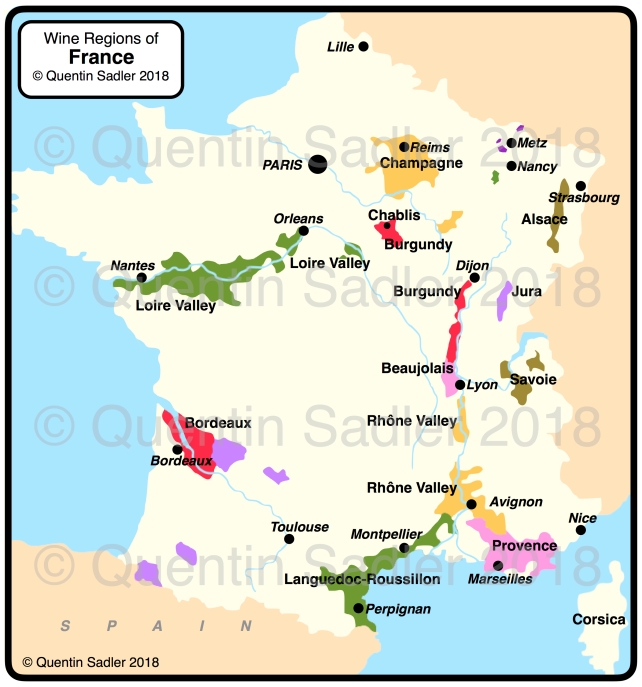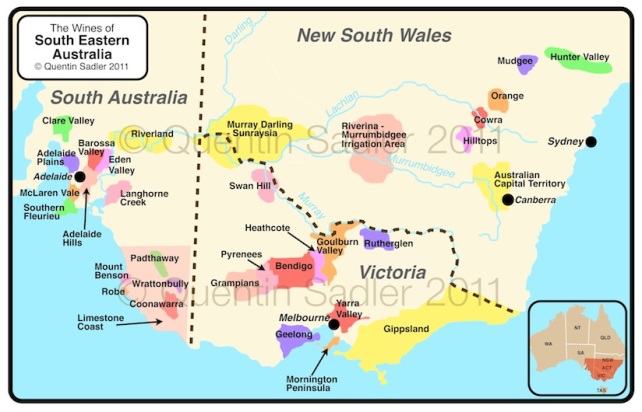
Wine is the lifeblood of Chablis. The vineyards can be seen from the heart of the village and you often see grape growers going about their business.
Ah Chablis! That name conjures up all sorts of thoughts of stylish, sophisticated dry white wine. I love Chablis and think that the appellation / PDO has gone through a real renaissance over the last twenty years or so. There was a time when Chablis was frequently not what it ought to be and was instead a bit thin, green and tart.
This seems to longer be the case and the quality of Chablis available seems to be generally pretty high in my opinion. Sadly so does the price – and that is before Brexit. What makes Chablis such a pleasure though is the complexity, the minerality and is that sense that you are drinking a true thoroughbred – a classic. So why should that be a cheap wine? How can it be a cheap wine?
Cheap Chablis is always a disappointment and never shows you what Chablis should really be all about.
In some ways Chablis is a really simple wine to get your head around:
It is pretty much the northernmost outpost of the Burgundy wine region.
It’s only white.
It’s dry.
It’s only made from Chardonnay (Beauneois to the locals).
After that though it get’s a bit more complex because the differences are usually all about nuance rather than big, bold flavours. However the defining characteristic of Chablis should be all about the minerality in the wine. Minerality is the word we use to describe anything in a wine that does not come from the fruit or the winemaking. What actually causes these mineral characters is unknown and experts disagree – I have my own view that you can read about here – but they show themselves as stony, steely or earthy flavours and aromas.
Chablis should smell and taste stony and that is the defining character of the wine style. It should have that sense of the fruit being restrained and the wine brooding in the glass – rather than overt fruit leaping out at you. There should be tension in the glass between the (gentle) fruit, the crisp acidity and that minerality. They all vie for your attention, so the wine should feel beguiling and complex. Drinking a good, or great Chablis, should be an occasion.
I will write another day about the higher levels of Chablis Premier Cru and Grand Cru wines, but there is another subdivision of Chablis and it often gets overlooked.
That is Petit Chablis. I suspect very few of us go around actually knowing what Petit Chablis is, but it sells. It sells almost certainly because consumers assume that it has a relationship to Chablis itself – which it does.
The thing about Chablis is that it is really simple, pure even, until it isn’t. Chablis itself is all about the land in which it is grown. There are two important considerations with Chablis, the soil type the grapes are grown in and the aspect of the vineyard.
For a wine to be awarded the use of the Chablis name, or Chablis Premier Cru and Chablis Grand Cru, it must be grown in the vienyards around the (large) village of Chablis and be grown in the correct soils. These are a type of chalky limestone that was formed in the Jurassic era and was first identified in the village of Kimmeridge on Dorset’s Jurassic Coast. That is why the soil is known as Kimmeridgian, sometimes Kimmeridgian Clay.
The whole area was once ancient seabed – under a warm and shallow sea – and that is why it contains millions of fossilised mussels and oysters. Chablis must be grown in this soil and it is believed that it is this soil that helps the wine take on that mineral character. Chablis Premier Cru and Grand Cru must also be grown on Kimmeridgian soils, but in those instances they are on slopes facing south, south west or south east – this ensures they are riper than standard Chablis as the grapes get more sun.
Not all the land around the village of Chablis is Kimmeridgian though. At the top of the slopes there is a harder soil called Portlandian Limestone. It would be a waste not to plant anything in this soil, but there is no avoiding the fact that wine produced in these soils is different from Chablis – even if the same grape variety, Chardonnay, is used. That is why the wines grown in these soils are called Petit Chablis, so that we know they are different and perhaps that we should not hold them in such high regard as Chablis itself.
Traditionally we have been told that Petit Chablis is not mineral, instead it is is more fruity, but still crisp and dry. Broadly speaking I would say that is true, although it isn’t quite as clear as that makes out. Recently I have noticed that the quality of Petit Chablis seems to be very good right across the board – just like Chablis itself.
I have to be honest that until a few years ago I was barely aware of Petit Chablis existing, let alone understanding what it was, so my experience of it has all been in the last three or four years. In that time though I have noticed more and more that the wines are on the whole consistently good quality and often fantastic value for money. It really does seem to be a very reliable appellation, I have tasted a good few of late and they all seem to deliver a classy glass of wine.
In fact they might be a perfect reliable classic French dry white wine to fall back on now that the likes of Chablis and Sancerre have become so expensive. Petit Chablis has certainly become something of a house wine Chez moi and something that I frequently order when dining out.
At their best – and all these are very good – Petit Chablis is crisp and refreshing with apple, orchard fruit, some light creamy notes and lots of acidity as well as a little touch of that minerality for which Chablis is so famous. They are of course unoaked so remain bright and lively, so would appeal to Sancerre, Pouilly-Fumé and Sauvignon Blanc drinkers as well as lovers of White Burgundy.
Here are a few of the Petit Chablis wines that I have tasted and enjoyed in recent months:
2016 Louis Moreau Petit Chablis
Louis Moreau
Available in the UK for £12.99 per bottle from Waitrose
2017 Petit Chablis
Union des Viticulteurs de Chablis
Available in the UK for 12.00 per bottle from Marks & Spencer
2017 Petit Chablis Vielles Vignes
Domaine Dampt Frères
Available in the UK for 12.99 per bottle from Laithewaites
2016 Simonnet-Febvre Petit Chablis
Simonnet-Febvre
Available in the UK for 12.99 per bottle from Vinatis and Hay Wines
2017 Louis Jadot Petit Chablis
Louis Jadot
Available in the UK for 16.99 per bottle from Simply Wines Direct
2016 Alain Geoffroy Petit Chablis
Domaine Alain Geoffroy
Available in the UK for around £13 per bottle from The Oxford Wine Company,Oddbins, Albion Wine Shippers
Anytime you want a true classic French dry white wine, then Petit Chablis seems to me to be a good bet. Please ignore the word Petit in the name, these are all wines that deliver great big dollops of pleasure.












